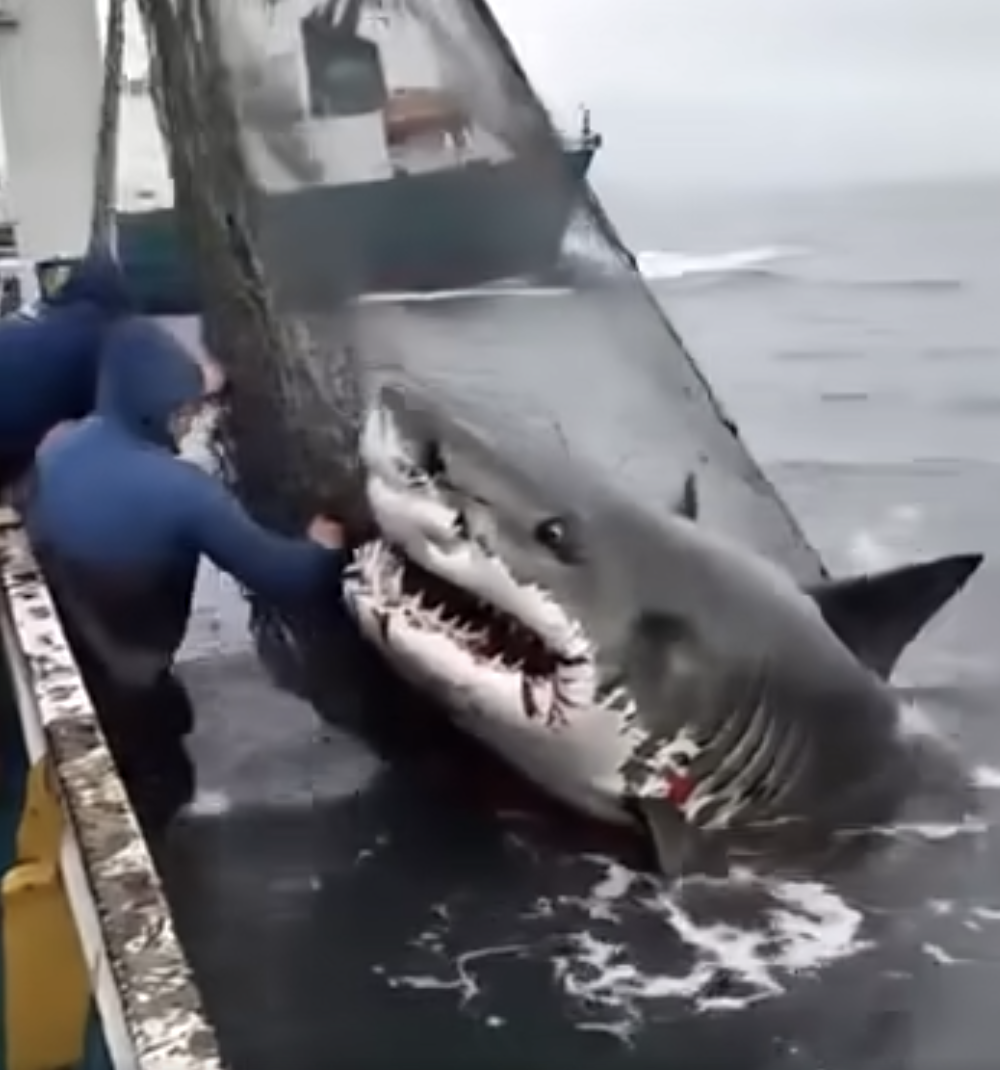
Full Story Behind the Image
At first glance, this image seems to depict a jaw-dropping and dangerous moment at sea: fishermen hauling in a massive, snarling shark tangled in their fishing net. The creature’s gaping mouth, rows of razor-sharp teeth, and unnaturally aggressive expression create a cinematic, almost surreal scene. However, upon closer examination, this image is not a real photograph of an actual animal—it is digitally manipulated or AI-generated.
Evidence This Image Is Not Real:
-
Anatomical Inconsistencies:
The shark’s teeth are exaggerated in number, symmetry, and size—resembling something from a horror movie like Jaws or a science-fiction film. Real great white sharks do have multiple rows of teeth, but not arranged in such an exaggerated, monstrous way. -
Facial Structure and Expression:
The shark’s facial expression seems unnaturally aggressive and almost anthropomorphic (human-like emotion shown through facial features), which is not typical of real marine photography. -
Lighting and Blending:
The way the shark integrates with the water and the net appears slightly off. The lighting on the shark doesn’t perfectly match the ambient lighting of the ocean and the fishermen, indicating digital editing or CGI. -
Context:
There are no credible reports of a shark of this exaggerated appearance being caught in fishing nets. If something this dramatic had occurred, it would likely be featured in major news outlets and marine biology circles.
What This Likely Is:
-
AI-Generated Image or CGI Render:
This is likely created using advanced AI image generation tools or 3D rendering software. These tools are now capable of producing hyper-realistic visuals that can fool the untrained eye. -
Part of a Viral Sensation or Creative Content:
It may be part of a fictional narrative or viral video intended to shock or entertain. Similar digitally altered shark images and videos often go viral on platforms like YouTube, TikTok, or Facebook under titles like “Monster Shark Caught by Fishermen!” or “What Lurks Beneath the Ocean.”
Conclusion:
While visually captivating and intense, the shark in this image is not real. The image is best understood as a piece of creative or fictional content rather than a documentation of a real-life event. Still, it serves as a compelling reminder of the power of modern digital tools—and why it’s important to critically assess what we see online.

